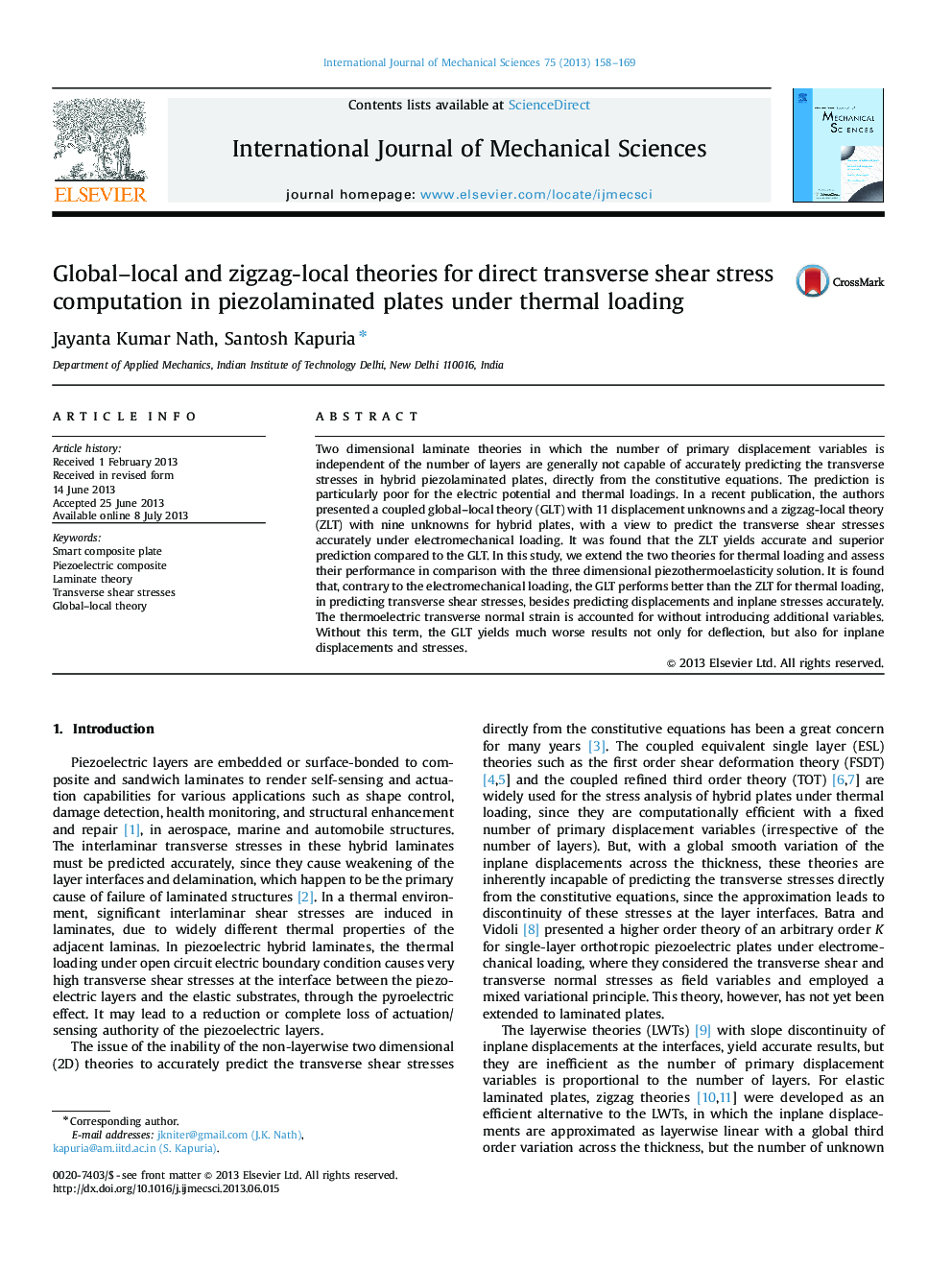| Article ID | Journal | Published Year | Pages | File Type |
|---|---|---|---|---|
| 783707 | International Journal of Mechanical Sciences | 2013 | 12 Pages |
•Accurate prediction of transverse stresses in piezolaminated structures using 2D laminate theories, directly from the constitutive equations, is challenging.•Here, we develop two global–local 2D theories with 11 and nine primary variables for piezolaminated plates under thermal loading for the above purpose.•The accuracy of the two theories is critically assessed in direct comparison with the exact 3D piezothermoelasticity solutions for hybrid laminated plates under thermal loading.•The findings will have significance influence on future research on mechanics of smart laminated structures under thermal environments.
Two dimensional laminate theories in which the number of primary displacement variables is independent of the number of layers are generally not capable of accurately predicting the transverse stresses in hybrid piezolaminated plates, directly from the constitutive equations. The prediction is particularly poor for the electric potential and thermal loadings. In a recent publication, the authors presented a coupled global–local theory (GLT) with 11 displacement unknowns and a zigzag-local theory (ZLT) with nine unknowns for hybrid plates, with a view to predict the transverse shear stresses accurately under electromechanical loading. It was found that the ZLT yields accurate and superior prediction compared to the GLT. In this study, we extend the two theories for thermal loading and assess their performance in comparison with the three dimensional piezothermoelasticity solution. It is found that, contrary to the electromechanical loading, the GLT performs better than the ZLT for thermal loading, in predicting transverse shear stresses, besides predicting displacements and inplane stresses accurately. The thermoelectric transverse normal strain is accounted for without introducing additional variables. Without this term, the GLT yields much worse results not only for deflection, but also for inplane displacements and stresses.
